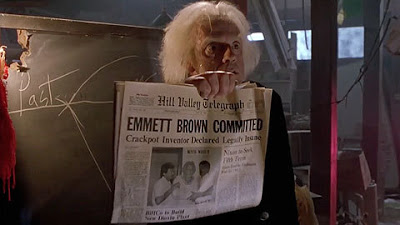From The Adventure Gamer
Written by Joe Pranevich
In Trinity, we traveled to the dawn of the nuclear age and attempted to change history. We failed and became trapped in a time loop with our mischievous roadrunner friend. I suppose there are worse ways to go. In the words of one famous time traveler, “Great Scott!”
But what if the game didn’t end that way? Unlike most of the games we played, this is not just a rhetorical question. Infocom has always had a special place in the hearts of digital archeologists and a level of attention that arguably exceeds their real contribution to computer game history. This is in part thanks to Infocom’s own newsletters, but also the preservation of memos and documents from the company itself. That gives us a view on just about everything from sales performance to standings within the local softball leagues. As recently as 2019, source code was placed online for most of the classic Infocom games. This would be fun all by itself, but in Trinity’s case we are fortunate to have preserved notes on three separate versions of the game, starting from something akin to “Time Police” and ending with the version that we explored together. I had hoped to include this material with the Final Rating, but that post was long enough. Let’s close out our coverage of Trinity with a look at three versions of the game that might have been.
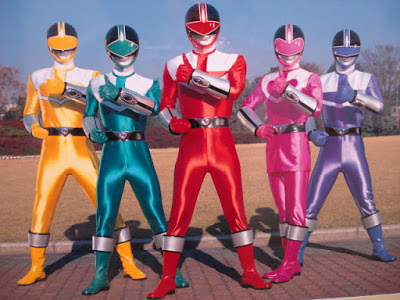 |
| Mirai Sentai Timerenger! |
Trinity 0.1 – The Time Police
It all started with a dead bird. A cat proudly deposited the carcass on the doorstep of her owner, a Japanese school teacher who had received enough of these little offerings to recognize something out of the ordinary. She sealed the corpse in a plastic bag and brought it to a biologist at the nearby medical school. The remains were identified as Geococcyx californianus, a species native to the southwest corner of North America. What a roadrunner was doing in the vicinity of Nagasaki’s Heiwa Koen (Peace Park) was anybody’s guess.
The first of the three pitches is undated but likely written sometime in 1985, although it may have been during or after the development of Wishbringer. It shows the game at an embryonic stage, but already elements were coming together that we immediately recognize as the core of Trinity. Nuclear blasts, in addition to all of the damage that we can see, also pierced holes in the fabric of space and time. These holes connected the sites of those blasts in an as-yet unknown way, allowing a New Mexico roadrunner to end up in Nagasaki, whirlpools of coconut-filled boiling water to appear spontaneously over Utah, and many other such events. Scientists discovered and investigated these holes, but the military saw them as being little more than a curiosity. Without military application, who cares if reality is becoming Swiss cheese? That was until a defector revealed that the Soviets had not only discovered the holes, but that they had a plan of their own to use them.
I’ll let Moriarty’s own words describe the next part:
Such were the humble beginnings of Classified Defense Project #43112. Its official code name is Termite. But the people who got it going and keep it running like to call themselves the Time Police.
You play the role of a Sentry on duty at Project Termite’s Alamogordo Station. It’s your duty to monitor the Hole created by the first atomic explosion, and to make sure nobody is in there mucking around with the original Manhattan Project. You wouldn’t want some other country to get The Bomb before we did, would you?
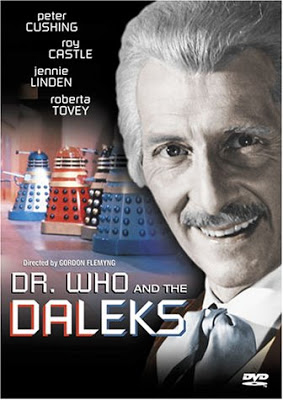 |
| Grand Moff Who? |
The pitch continues into a brief description of gameplay. Rather than directly interact with history, you have an “array of technological gadgets” resembling real birds and small mammals that act as your eyes and ears in the past. Your job is to ensure that history (and a very large bomb) go off without a hitch, without being spotted and potentially changing history yourself. On one fateful day, it is your responsibility to defend the United States from a two-fold attack by the Soviet Union. You have to defend both the Trinity site on the morning of the blast as well as “present day” Alamogordo Station. It sounds like a lot of fun, even if it is unclear how you would solve two sets of problems at once.
Back to Moriarty:
Meep, your trusty Electric Roadrunner, has detected an army of stainless steel armadillos closing in on the shot tower at Ground Zero. And there’s something else lurking in that pre-dawn desert; a mysterious Presence that will eventually lock you in a bizarre three-way struggle against time. The future history of the world — perhaps the fate of the universe itself — depends on your courage and resourcefulness. No matter what happens, you MUST make sure that the first atomic bomb detonates precisely on schedule! It is 5:00 AM on July 16, 1945. You have twenty-nine minutes.
I understand why this pitch didn’t get made, but boy does it sound fun. The mix of robotic avatars and having to balance two separate modes of play at once sounds a bit too much like Suspended and A Mind Forever Voyaging, but there is something perfect about the idea of the Soviets using an army of time-traveling robotic armadillos. Would the tone have been jarring against its premise? How much fun can you have in a story about nuclear armageddon? And both of those previous games struggled with balancing the multiple aspects of their gameplay; could Trinity have done better? It is also not clear how many of the “termite holes” you would explore, and Moriarty may not even have worked out those details yet. This pitch represents a great start and could have been a fun– if very different– game if it had come to fruition. I especially like the hard science fiction approach and the structure that being a part of “Time Police” could bring to the story.
You can read the full first proposal here: https://github.com/historicalsource/trinity/blob/master/tr1.txt
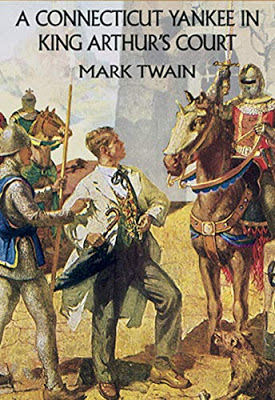 |
| “Bridgeport?” Said I. “Camelot,” Said he.” |
Trinity 0.5 – Magical Kingdom
The next version of the game, dated September 1985, takes us much closer to the Trinity that we know. The hard science fiction and robotic armadillos are gone, as is the “Time Police”. Instead, the game takes a hard turn into straight up fantasy. The start of the game feels quite similar to the final product: you are an American tourist in London on the day that the bombs fell. You will have to “solv[e] a lighthearted puzzle or two” to escape from London. While the pitch does not say so explicitly, it’s likely that Moriarty had already worked through much of the Kensington Garden experience. When the bomb drops however, the game takes a turn from what we would come to know:
“Inside” the duct, you discover a bizarre fantasy world where space and time are interchanged. The magical inhabitants of this twilight zone are wringing their 4-dimensional hands because our atom bomb tests are blasting big, unsightly holes in their otherwise peaceful universe. The only way to prevent the collapse of the entire kingdom is for some foolhardy adventurer to journey backwards in time to the first A-bomb test at Trinity, and prevent it from going off.
Armed only with the 3-D map of the Hole Matrix provided in the game package, the player ventures through a bewildering variety of exotic locations, solving puzzles, meeting unlikely characters and casting magic spells. But unknown forces are at work to foil your quest, and you soon find yourself caught up in a multidimensional war between two great empires who seek to control the Matrix. It all comes together during a spectacular climax in the New Mexico desert, where you must single-handedly decide the course of history in just 29 minutes of real playing time.
 |
| “My name is Peabody. I suppose you know yours.” |
The game sounds much more “Zorkian” with exotic locations and magic spells; in fact, I cannot help but wonder if the bombs wouldn’t have opened the door just a smidge to the actual Great Underground Empire. This is all speculation, but Trinity’s internal development code was “Z7”. All of the previous codes (from “Z0” to “Z6”) were for the Zork and Enchanter series, plus Wishbringer, which also took place in the same universe. “Z8” and “Z9” would later be given to Beyond Zork and Zork Zero. Trinity is the only game in that series of codes to not be a Zork game. Why? Could they have been aiming for a more generic fantasy game while using the “Z” code? Absolutely. Could they have left the door open for it being an implicit Zork sequel? Also yes, especially as this version of the pitch suggests that it was to be the first game in a new fantasy trilogy. We don’t know, but it feels like there could be a truth hidden in there someplace.
The “Hole Matrix” hinted at in the description, plus the fantasy kingdom itself, feels like an alternate or early form of the “wabe” from the final game. It seems that you would explore many different areas all connected by the nuclear explosions to solve puzzles. Except for the lack of spells and explicit fantasy elements, most of the zones that we traveled to in the final game could have worked with this pitch. Only the “hub” that connected them, plus the lack of magical solutions, could be different from the game that we know.
The final open question for this version has to do with the endgame: how would a “real-time” ending sequence work? Would touch typists and faster computers automatically have an edge? This must have been a major goal because Moriarty mentions the real-time nature of the ending more than once in his summary, and yet he doesn’t appear to have found a way to make it work. This is also the only version of the pitch to not include the roadrunner; I cannot but think that somehow these two problems are related! Other than being a humorous fantasy (rather than dour magical realism), this game has all of the elements of “our” version of Trinity. The puzzles and worlds may have differed, but this is recognizably the same game.
You can read the full second version of the pitch here: https://github.com/historicalsource/trinity/blob/master/tr2.txt
 |
| “My patience is wearing thin. I’m banishing you to a time warp from which you will never return!” – Oroku Saki |
Trinity 0.9 – Almost There!
The final draft summary we have is from November 1985 and it is essentially the game that we came to play in digest form. In fact, this is the shortest pitch of the three and is detailed enough that Moriarty must have been fairly far along in his development process. The beginning and middle of the game appear to be exactly as we have played it:
The door transports you to a Zorkish fantasy world, centered around an enormous sundial that casts a long, moving shadow across the landscape. This improbable universe is littered with lots of giant toadstools, each equipped with its own magic door. Whenever the dial’s shadow passes over a toadstool, the magic door opens, and you can visit a “real” historical place where somebody is about to explode an atomic bomb. Locations include an underground test site, a Siberian wilderness, a tropical atoll, a “Star Wars” orbital battlefield and a playground in Hiroshima.
The player has to explore every square inch of the fantasy world, figure out how to control the giant sundial, visit all the magic doors (in the right order) and solve a bunch of interconnected puzzles before he or she can tackle the seventh and final toadstool … the Trinity test.
So far so good. I especially like the nod to my theory that he was explicitly aiming for “Zorkian”, even if not the Great Underground Empire itself. And yet, Moriarty appears not to have cracked the final nut, how he would have run the end-game. This is not the three-way battle with robot armadillos from the earliest version, nor the real-time puzzles of the second, but something wholly different:
The player materializes in the test tower, only twenty-nine minutes before the Gadget is scheduled to detonate. The site is heavily guarded, and danger lurks behind every cactus. If you survive long enough to reach the control bunker, you’ll meet a Who’s Who of famous scientists, all intent on vaporizing your only way home. Can you stop the Bomb from going off? What will happen if you do? And what about those mysterious beings who keep making snide comments in the corners of your video screen? Are you being used?
I love the mystery being implied here, even if it is frustrating that we never got more than sniffs of it in the final version of the game that we played. Who was the mysterious voice in our ear? We never found out and it seems like perhaps Moriarty may have changed his mind about it more than once during development. Alas, we also never saw the “Who’s Who” of famous scientists as the final endgame pivoted back towards the earlier ideal of causing as few ripples in history as possible. In fact, other than listening to humans on the radio, we interacted directly with absolutely no one in the endgame as we played it. There is not one “famous scientist” in there at all!
You can read the full third version of the pitch here: https://github.com/historicalsource/trinity/blob/master/tr3.txt
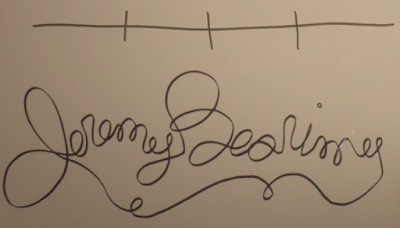 |
| “Okay, um, how do I explain this concisely? This is Tuesdays… and also July.” “And sometimes, it’s never.” |
Moving On
I hope you enjoyed these brief looks at alternate versions of Trinity. I am glad that we were able to experience the final version of the game, but there are many neat ideas presented across these several drafts that would have been fun to experience in some way. Ultimately, the ending of Trinity isn’t perfect. The puzzles are too difficult and too many elements are left unexplained and unresolved. The nature of the time loop doesn’t give us a sense of finality, especially after we looted our own paradoxical corpse. It seems from these documents that while the only aspect of Trinity that did not change from draft to draft was the final confrontation in the desert, the actual mechanics of that endgame experience did not come into focus until late in his design process. I wish we had these documents for more games to give us a basis for comparison, but what we have is a fascinating, if all too brief, window into how the sausage was made.
With this last side avenue explored, I am finally ready to tackle some Leather Goddesses. You can expect a mini-review of that soon.
With the spread of Coronavirus around the world, I want to take this moment to wish for safety and health for all of our readers and their families. Stay well.
Original URL: https://advgamer.blogspot.com/2020/03/missed-classic-trinity-when-soviet-time.html

